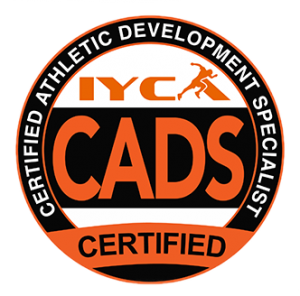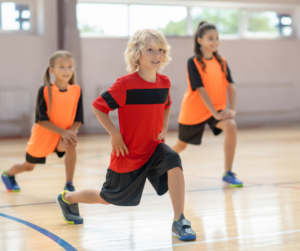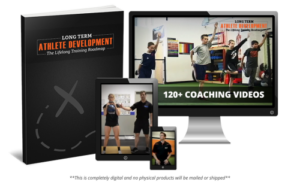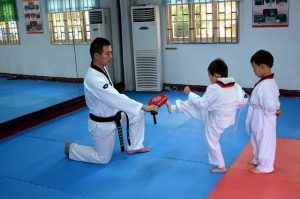 Softball is more than a game; it’s a classroom, a stage, and a proving ground for athletes to grow, not just in skill but in character, resilience, and mental strength. Yet, too often, softball coaching practices miss the mark, focusing narrowly on skills or adopting approaches that hinder more than help.
Softball is more than a game; it’s a classroom, a stage, and a proving ground for athletes to grow, not just in skill but in character, resilience, and mental strength. Yet, too often, softball coaching practices miss the mark, focusing narrowly on skills or adopting approaches that hinder more than help.
If we truly want to see our athletes thrive—on the field and in life—we must take a closer look at the mistakes we’re making and how to correct them.
Before we venture there, I want to personally say thank you for opening this article. The vast majority of coaches believe they aren’t making mistakes, or perhaps they ‘know it all’.
In my 20+ years of coaching athletes and over 35 years of being a female athlete, your willingness to improve is a differentiator in the industry of coaching softball.
I am not excluded from these mis-steps. I’ve made my fair share.
Let’s dig our cleats in and change the game, together.
 Mistake #1: Teaching Only Softball Skills and Measuring Athletes Solely on Softball Skill
Mistake #1: Teaching Only Softball Skills and Measuring Athletes Solely on Softball Skill
Softball coaching is not just about hitting, throwing, and catching. This may be obvious and many may already know this, yet, many softball coaches emphasize skill mastery while ignoring equally critical dimensions like mental strength, physical endurance, and game intelligence.
Although coaches may articulate the importance of training the whole athlete, the actions are often not aligned.
When we measure athletes on skills alone, we reduce their worth to stats and mechanics, overlooking the mental grit and physical readiness that drive those skills. Mental strength empowers players to stay calm under pressure. Physical conditioning ensures they can perform consistently through the grind of a season. Game intelligence—knowing when to bunt, how to position themselves defensively, or how to adjust in the batter’s box—makes the difference between good and great.
The Shift: Incorporate holistic assessments.
Personally, I love making the subjective, OBJECTIVE. But how do we assess attributes, talents and qualities we want to enhance on the diamond? Using a simple number scale ( I prefer 1-7) or +,+/- , – system are two examples. I’ve also used a 5-star scale for younger athletes.
You want to do your best to be specific in what your assessing. For example- many of my assessments assess an athletes consistency in certain behaviors and habits I’m looking to reinforce as a coach. When creating your own holistic assessments, you want to think about ‘measuring what matters’. Often we assess the most random things that don’t get reinforced and therefor don’t stand a chance at improving. So be selective in what you choose.
A few examples to get you started:
Nutrition: I fuel my body at least 3 times a day and each meal includes protein, veggies and grains
Mental Strength: I bounce back quickly and swiftly after an error on the field
Mental Strength: I can shift my mind from a critical state to a creative state quickly
Hydration: I consume 64oz of water 7 days per week
Sleep: I get 7 or more hours of sleep each night
Fitness assessments can include, Speed Assessments (Home to First Time, Home to Home times, T-Drill Times, etc), Strength Assessments (Simple 1 Minute Push-up Assessment, Broad Jump Distance, Plank Hold Times, etc).
If you value creating STUDENT athletes, then you will likely assess their academics in some way, for example: I complete my school work on time and to the best of my ability.
The list goes on. Feel free to comment some of the holistic ways you assess your athletes! I’d love to hear.
Finally, when we expand our definition of success, we open the door for athletes to thrive in ways that last long after the last inning. Allow them to self-assess. I recommend re-assessing every 30-90 days. This allows athletes (and you) to see trends.
Mistake #2: Post-Error Behavior from Softball Coaches
We’ve all said it: “Shake it off!” or “have a short-term memory.” But let’s be honest—if our athletes could instantly move on from their errors, they would. These phrases, while well-meaning, dismiss the complexity of recovering from a mistake.
There is an opportunity to improve our craft of softball coaching.
Errors in softball—and life—trigger emotional responses: frustration, embarrassment, or even shame. But these aren’t just feelings that come and go; they spark a physiological response that can deeply impact an athlete’s performance if left unaddressed.
When an athlete makes an error, their brain often interprets it as a threat, activating the fight-or-flight response. This triggers the release of stress hormones like adrenaline and cortisol. The heart rate increases, breathing becomes shallow, and muscles tense up—all of which are designed to help us react quickly in true danger. But on the softball field, these responses often work against the athlete.
The flood of stress hormones can cause:
- Mental fog: Making it harder for athletes to think clearly, stay focused, or make quick decisions.
- Muscle tension: Leading to mechanical errors in movement, slower reaction times, or even fatigue over time.
- Emotional overload: Heightening feelings of frustration or shame, which can spiral into negative self-talk and reduced confidence.
Without tools to manage this physiological cascade, athletes may get stuck in a cycle where their body and mind are working against them, even as they’re trying their hardest to bounce back.
I go into 12 different hacks in my book Mental Strength for the Competitive Softball Athlete
The Shift: Teaching Emotional and Physiological Recovery
To truly help athletes recover from errors, we must address both the emotional and physiological responses. It’s not enough to tell them to “move on”—we need to teach them how.
- Breathing Techniques: Simple strategies like diaphragmatic breathing can interrupt the stress response. Encourage athletes to take slow, deep breaths—inhale for four counts, hold for four, exhale for six. This activates the parasympathetic nervous system, helping to calm the mind and relax the body.
- Body Awareness: Teach athletes to release tension in their shoulders, jaw, or hands—common areas where stress accumulates. A quick shake-out or mindful stretch can reset the body.
- Reframing the Error: Help athletes shift their perspective by asking reflective, constructive questions: “What can you control in the next play?” or “What did this teach you?” This moves them from a critical mindset to a creative one, allowing growth instead of rumination. I call this “return on error”.
I expand on these and give you 9 More Mental Strength Hacks in my Book Mental Strength for the Competitive Softball Athlete.
When we equip athletes with tools to regulate their emotions and physiological reactions, we help them stay in the game—mentally and physically. The more they practice these recovery strategies, the more they’ll build resilience, not just for softball but for life’s inevitable challenges.
As your athletes adapt you will need to as well. The old ‘cues’ will no longer carry weight (well, they likely don’t right now either). Be willing to change what you are saying and cueing- in order to be more effective as a coach.
 Mistake #3: Neglecting Rest and Recovery
Mistake #3: Neglecting Rest and Recovery
In competitive softball coaching, the grind is often glorified: more reps, more games, more work. But the relentless pace comes at a cost—burnout, injury, and declining performance.
Science tells us that rest is not laziness; it’s a performance enhancer. Rest allows muscles to repair, the mind to process, and the body to reset. Active rest—low-intensity activities like yoga, swimming, fun non-softball games, or light throwing—keeps athletes engaged while facilitating recovery.
I am going to keep this one short, as I could do a whole separate blog on this one. Let me know in the comments if you’d like that!
The Shift: Make recovery a priority in your program. Schedule rest days, integrate active recovery, and educate athletes on the importance of sleep, hydration, and nutrition. When athletes feel refreshed, their focus sharpens, their energy soars, and their love for the game deepens.
Mistake #4: De-Prioritizing Mind and Body Strengthening
Softball athletes spend hours honing their craft, but how much time is devoted to strengthening their bodies to prevent injuries—or their minds to handle the game’s pressures? Neglecting these areas leaves athletes vulnerable, both physically and mentally. I see this often in the “in-season”.
As a coach, you wear a LOT of hats, I get it, I’ve been there.
When you prioritize everything, you prioritize nothing. But the reality is, wearing all the hats is often tied to ego (just being honest), every coach has the ability to OUTSOURCE parts of the game to credible, skilled resources. Yes, it may take work to find the right fit for your softball coaching roster, but it’s possible.
If you are resistant to collaboration, you are single-handedly limiting your athletes.
If you specialize in the game of competitive softball, other people you’ll want on your coaching ‘team’ may be qualified Strength & Conditioning Coaches, Mental Strength Coaches, Nutrition Coaches, Sport Psychologist, etc. I encourage you to stack your roster with resources- the International Youth Conditioning Association is obviously one of the best educational resources to have in your corner. (YES, I’m biased)
There are some structures you can add to your program that can also help keep the Mental Game and the Physical Game a priority, I’ll share two below:
- Incorporate Injury prevention daily—like shoulder stability drills, hip-strengthening routines, and dynamic warm-ups that prepare the body for game-day demands can be a structure you create and reinforce.
- Mental Agility Practice requires daily practice too—mental rehearsal, reflection, or a daily coaching question can build resilience and focus as you begin and end a practice.
The Shift: Treat mental and physical preparation as essential components of every training session. Integrate routine exercises and experiences that fortify both the body and mind. When female athletes feel strong and centered, they perform with confidence and minimize the risk of setbacks.
Thriving on the Dirt Diamond
The dirt diamond is where lessons are learned, confidence is built, and dreams take shape. As softball coaches, we have the privilege—and responsibility—to nurture athletes in a way that helps them thrive in softball and beyond.
 For a deeper dive into fostering mental strength, building resilience, and creating a competitive edge for your athletes, check out my book Mental Strength for the Competitive Softball Athlete. This book is written for the athlete.
For a deeper dive into fostering mental strength, building resilience, and creating a competitive edge for your athletes, check out my book Mental Strength for the Competitive Softball Athlete. This book is written for the athlete.
It’s packed with actionable strategies to eliminate self-doubt, maintain focus, and perform under pressure. Together, let’s equip our athletes to shine—on the diamond and in life.

Julie Hatfield-Still
Julie is an Entrepreneur, CEO, Coach and Author. She is the President & Founder of the Non-Profit Beyond The Game Alliance. In addition to her work as a business consultant and coach of coaches, leaders and entrepreneurs. Julie is a Speed Development Specialist and Inner-Game Coach in the college, high school and youth levels.
 In youth sports, particularly with athletes under the age of 12, the language and questions we use as parents, coaches, and mentors hold the potential to shape not only their performance but their long-term relationship with the game. The power of questions and language in youth sports is undeniable.
In youth sports, particularly with athletes under the age of 12, the language and questions we use as parents, coaches, and mentors hold the potential to shape not only their performance but their long-term relationship with the game. The power of questions and language in youth sports is undeniable. The ultimate goal in youth sports should not be about creating the next pro athlete, but rather fostering a love for the game and the many life skills that come along with it: resilience, teamwork, problem-solving, and discipline.
The ultimate goal in youth sports should not be about creating the next pro athlete, but rather fostering a love for the game and the many life skills that come along with it: resilience, teamwork, problem-solving, and discipline. Parents of young athletes play a critical role in shaping their child’s mindset. The art of parenting an athlete is akin to being a great coach—both roles require guiding children through challenges while fostering a love for the process.
Parents of young athletes play a critical role in shaping their child’s mindset. The art of parenting an athlete is akin to being a great coach—both roles require guiding children through challenges while fostering a love for the process. Coach, we all know that, it’s the little things that matter, and that little things, eventually add up to big accomplishes, successes and wins.
Coach, we all know that, it’s the little things that matter, and that little things, eventually add up to big accomplishes, successes and wins. Doug Heslip is the owner of Heslip Elite Sports Performance Training in Negaunee, MI and the creator of Seek & Destroy – Elite Running Back Drills a video product for football coaches. He works with young athletes in a variety of sports and teaches football coaches how to incorporate speed & agility training into their sessions.
Doug Heslip is the owner of Heslip Elite Sports Performance Training in Negaunee, MI and the creator of Seek & Destroy – Elite Running Back Drills a video product for football coaches. He works with young athletes in a variety of sports and teaches football coaches how to incorporate speed & agility training into their sessions.
 Education is Energizing. Do you believe it?
Education is Energizing. Do you believe it? Warm-Ups, why bother? Great question! In this blog I share 3 Massive Benefits of warm-ups.
Warm-Ups, why bother? Great question! In this blog I share 3 Massive Benefits of warm-ups. Massive Benefit #2: Reducing Injury Risk
Massive Benefit #2: Reducing Injury Risk Are you looking to run effective sports practices?
Are you looking to run effective sports practices? This is Must-Have Handbook for every coach who desires to incorporate Long Term Athlete Development into their practices-
This is Must-Have Handbook for every coach who desires to incorporate Long Term Athlete Development into their practices-  It was no surprise that the athletes polled expressed that their favorite coaches were those who were most effective and that their least favorite coaches had more of the characteristics expressed as ‘ineffective’.
It was no surprise that the athletes polled expressed that their favorite coaches were those who were most effective and that their least favorite coaches had more of the characteristics expressed as ‘ineffective’.
 As an industry, we are playing a losing game right now and it’s time to look in the mirror. Consider this, if seven out of ten employees quit their job at a company due to burnout or overuse, it’s fair to assume the company would be concerned.
As an industry, we are playing a losing game right now and it’s time to look in the mirror. Consider this, if seven out of ten employees quit their job at a company due to burnout or overuse, it’s fair to assume the company would be concerned.
 Developing the fundamental movement skills (e.g., walking, running, and jumping) happens early on in a child’s life. Unfortunately, being unable to perform fundamental movement skills can restrict later opportunities, which is why it is vital to develop physical literacy early in the child’s life.
Developing the fundamental movement skills (e.g., walking, running, and jumping) happens early on in a child’s life. Unfortunately, being unable to perform fundamental movement skills can restrict later opportunities, which is why it is vital to develop physical literacy early in the child’s life.  The very first step in any effort towards change, is to gain education. Our
The very first step in any effort towards change, is to gain education. Our It is no secret that the development of the young athlete is multifaceted and it is the responsibility of the coach and/or trainer to take into consideration developmental, physical, and psychological aspects of training.
It is no secret that the development of the young athlete is multifaceted and it is the responsibility of the coach and/or trainer to take into consideration developmental, physical, and psychological aspects of training. 

 Brett Klika is a youth performance expert and a regular contributor to the IYCA who is passionate about coaching young athletes. He is the creator of the
Brett Klika is a youth performance expert and a regular contributor to the IYCA who is passionate about coaching young athletes. He is the creator of the 
 Brett Bartholomew is a strength and conditioning coach, author, consultant, and Founder of Art of Coaching™. His experience includes working with athletes both in the team environment and private sector along with members of the United States Special Forces and members of Fortune 500 companies.
Brett Bartholomew is a strength and conditioning coach, author, consultant, and Founder of Art of Coaching™. His experience includes working with athletes both in the team environment and private sector along with members of the United States Special Forces and members of Fortune 500 companies.
 One of the fastest and easiest ways to create a community where young athletes feel like they belong is for coaches and other athletes to
One of the fastest and easiest ways to create a community where young athletes feel like they belong is for coaches and other athletes to  This level of consistent feedback brings parents into the process. It leaves no question as to where their investment of time, money, and energy in your program is going. They are less likely to discontinue participation when they understand where their child is in the developmental process. It doesn’t hurt that they get to know you better either.
This level of consistent feedback brings parents into the process. It leaves no question as to where their investment of time, money, and energy in your program is going. They are less likely to discontinue participation when they understand where their child is in the developmental process. It doesn’t hurt that they get to know you better either. 

 3. Calisthenics: The simple stuff like we did back in P. E. Remember jumping jacks? How about the lost art of jumping rope? Calisthenics are a fantastic tool for warming up and coordination activities. Simple? Yes… but much more effective than jogging around a soccer field if the goal is to improve athleticism.
3. Calisthenics: The simple stuff like we did back in P. E. Remember jumping jacks? How about the lost art of jumping rope? Calisthenics are a fantastic tool for warming up and coordination activities. Simple? Yes… but much more effective than jogging around a soccer field if the goal is to improve athleticism.
 Jeremy Frisch is the owner and director of
Jeremy Frisch is the owner and director of  way we consume information about strength and conditioning, and it’s probably not the best way for us to make decisions.
way we consume information about strength and conditioning, and it’s probably not the best way for us to make decisions. We see something on Instagram from someone with a bunch of followers, and we instantly think it must be the truth instead of digging deeper, doing our own research and getting the whole story. So, whether it’s politics or strength & conditioning, it’s important to get the whole story before you make a decision.
We see something on Instagram from someone with a bunch of followers, and we instantly think it must be the truth instead of digging deeper, doing our own research and getting the whole story. So, whether it’s politics or strength & conditioning, it’s important to get the whole story before you make a decision. Along with the effectiveness of a training stimulus, you have to weigh the risk vs. benefit to help determine whether it’s the right choice to include in a program. For example, when I see kids standing on stability balls or doing circus tricks, I feel like the training benefit is incredibly small while the risk is fairly high. Or, I’ll see kids stacking a bunch of plates up on top of boxes to see how high they can jump. Again, the training benefit of jumping onto a box is no greater than jumping in the air as high as you can and landing on the ground, but the risk is MUCH greater. So, I personally don’t feel like the risk outweighs the benefit.
Along with the effectiveness of a training stimulus, you have to weigh the risk vs. benefit to help determine whether it’s the right choice to include in a program. For example, when I see kids standing on stability balls or doing circus tricks, I feel like the training benefit is incredibly small while the risk is fairly high. Or, I’ll see kids stacking a bunch of plates up on top of boxes to see how high they can jump. Again, the training benefit of jumping onto a box is no greater than jumping in the air as high as you can and landing on the ground, but the risk is MUCH greater. So, I personally don’t feel like the risk outweighs the benefit. Jim Kielbaso is the President of the IYCA and owner of
Jim Kielbaso is the President of the IYCA and owner of 
 Coaches may recognize an exaggerated arch in the lower back, but that’s just one part of the equation. The ability to control anterior and posterior pelvic tilt is critical to sprinting, squatting, hinging, and a variety of athletic movements. Many athletes struggle with these movements because they simply don’t know how to create or control pelvic tilt.
Coaches may recognize an exaggerated arch in the lower back, but that’s just one part of the equation. The ability to control anterior and posterior pelvic tilt is critical to sprinting, squatting, hinging, and a variety of athletic movements. Many athletes struggle with these movements because they simply don’t know how to create or control pelvic tilt.
 Tears rushed down my cheeks and fell to the grass like the collective sweat that rushed down our necks. I wanted to be inside the lines again. I yearned to still be a part of our sacrifice. To be living the collective commitment we made to one another. To be on the field playing the game that we loved. In those final moments, I was flooded with a sense of loss.
Tears rushed down my cheeks and fell to the grass like the collective sweat that rushed down our necks. I wanted to be inside the lines again. I yearned to still be a part of our sacrifice. To be living the collective commitment we made to one another. To be on the field playing the game that we loved. In those final moments, I was flooded with a sense of loss. 

 I found so much meaning in, I drew so much of my self-worth from sports. And while I found so much of myself
I found so much meaning in, I drew so much of my self-worth from sports. And while I found so much of myself  Jill Kochanek is a doctoral student at the Institute for the Study of Youth Sport at Michigan State University. She is also a high school soccer coach. As a coach-scholar, Jill is passionate about bridging the research-practice gap to make sport a more inclusive, empowering context. Her research and applied work centers on helping athletes (and coaches) take charge of their own developmental process and social progress. If you enjoyed this article, feel free to visit her youth sport coaching blog,
Jill Kochanek is a doctoral student at the Institute for the Study of Youth Sport at Michigan State University. She is also a high school soccer coach. As a coach-scholar, Jill is passionate about bridging the research-practice gap to make sport a more inclusive, empowering context. Her research and applied work centers on helping athletes (and coaches) take charge of their own developmental process and social progress. If you enjoyed this article, feel free to visit her youth sport coaching blog, 
 Jared Markiewicz is the founder and CEO of Functional Integrated Training, in Madison, WI. Jared has worked with a wide array of athletes including middle schoolers, collegiate and professional athletes, as well as adults – all looking to find the best version of themselves. He sits on the IYCA Advisory Board, has gone through many IYCA certifications, and is a regular contributor and speaker for the IYCA.
Jared Markiewicz is the founder and CEO of Functional Integrated Training, in Madison, WI. Jared has worked with a wide array of athletes including middle schoolers, collegiate and professional athletes, as well as adults – all looking to find the best version of themselves. He sits on the IYCA Advisory Board, has gone through many IYCA certifications, and is a regular contributor and speaker for the IYCA.
